One more day in Salzburg and there was still more to see. There's surprisingly quite a lot to do in such a small city.
Sunday, August 16, 2020
As I mentioned in my blog about Hamburg, I really like the breakfast they serve at a&o hostels. It was still good at this one, however the coronavirus crisis has caused some issues. Instead of a self-serve buffet like last year, you now have to order from someone behind a counter. Here it was even more difficult than in Hamburg because there was no paper menu to look at, all I could do was look around behind the counter from the distance I was at. I wanted müsli but wound up with some kind of puffy honeycrisp cereal.
After breakfast I checked out of the hostel, but before leaving put most of my things in a locker like I did the day before, so I wouldn't be too encumbered during this day of sightseeing.
The first thing I had to do Sunday morning was check out something I'd unknowingly missed the day before, as it was right next to Mirabell Palace. This place was the Dwarf Garden, or as it's known in German, Zwerglgarten, Zwergelgarten, or Zwergerlgarten. Seriously, I've seen it spelled three different ways on signs and can't figure out which spelling is the right one. This is a collection of rather comical statues of dwarves that were built around 1695 during the reign of Archbishop Johann Ernst, Graf (Count) von Thun und Hohenstein. The dwarves were all auctioned off in 1811 and were gradually bought back during the early 20th century; not all could be found which is why there are a few empty pedestals.
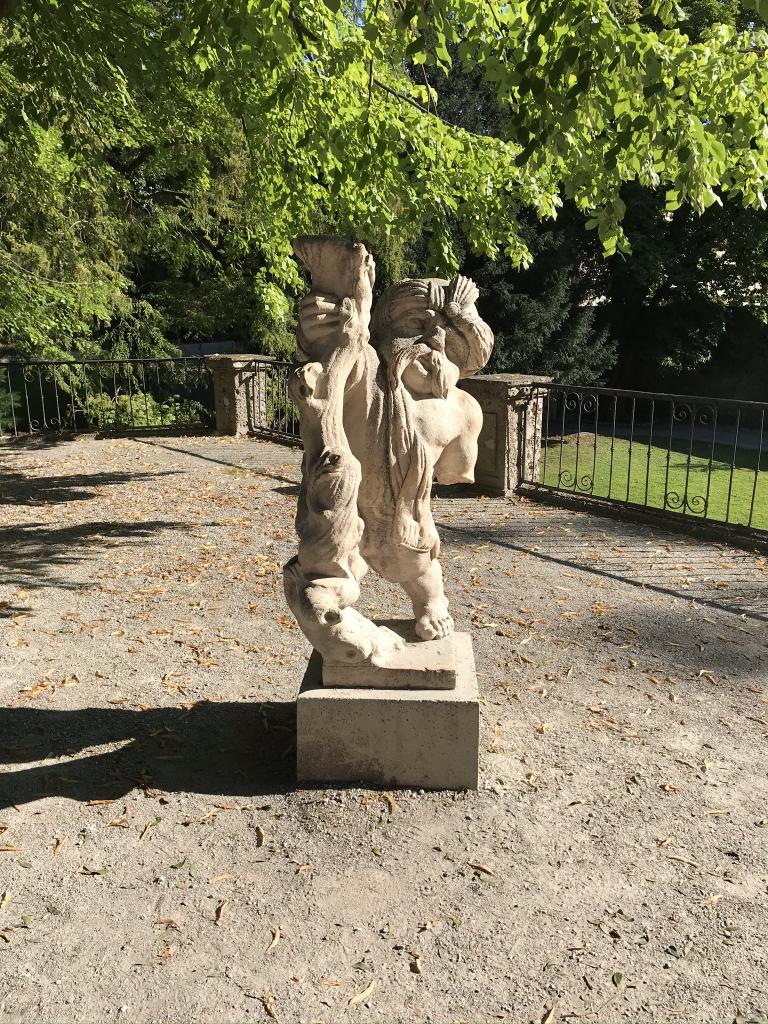
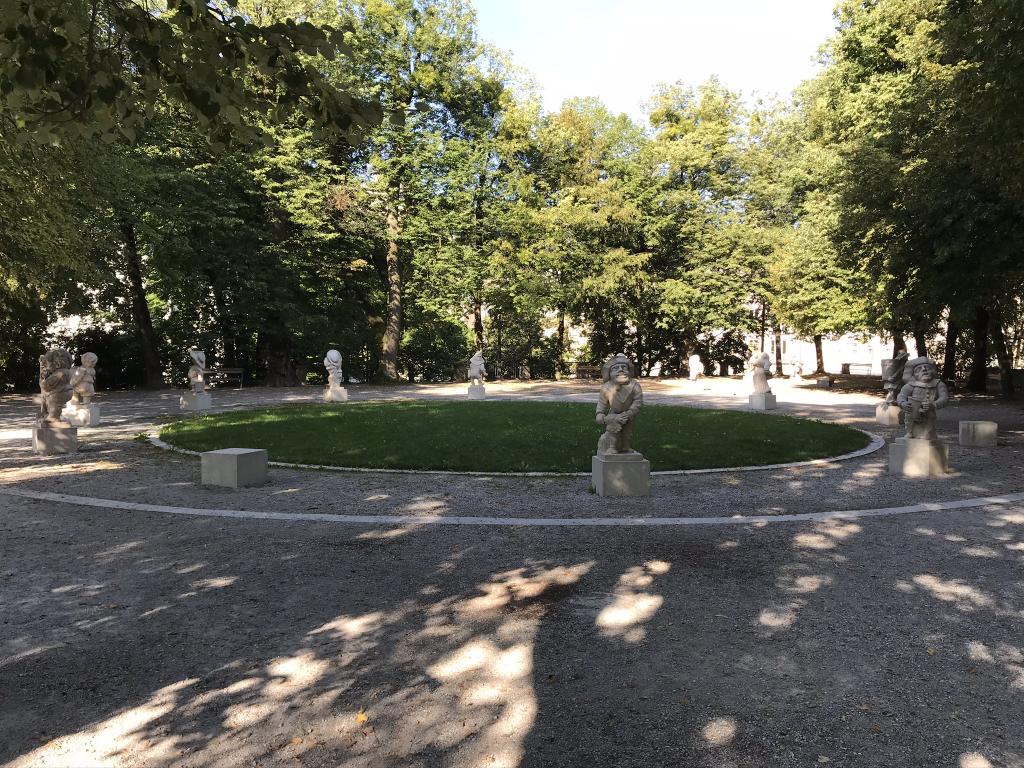
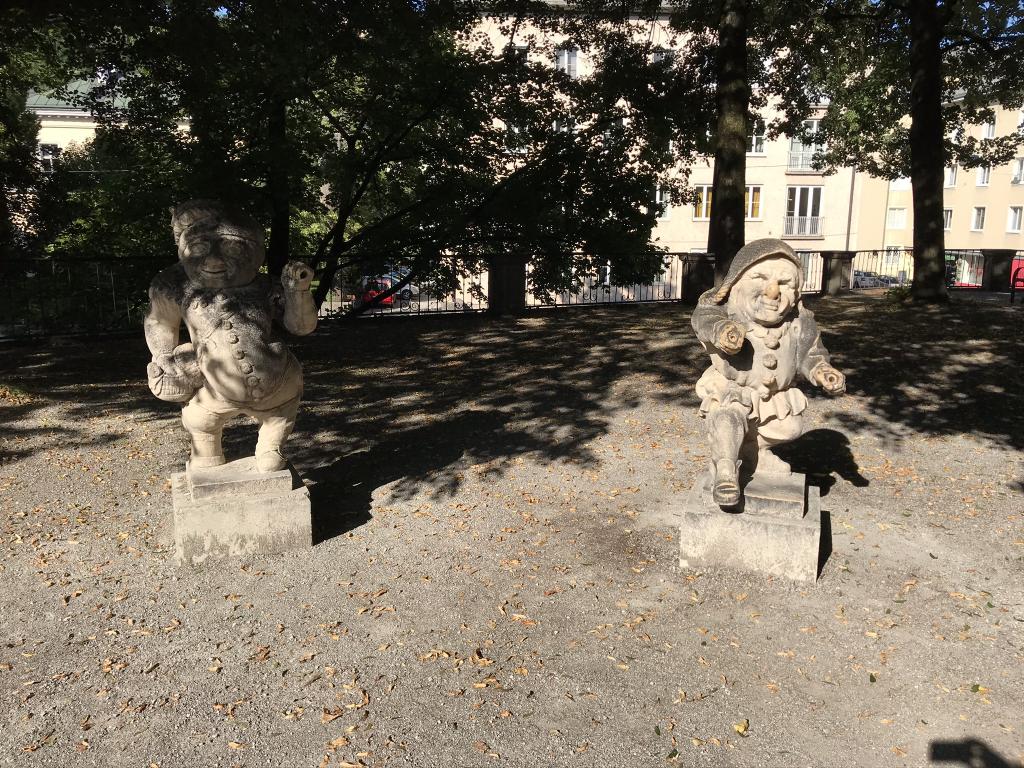
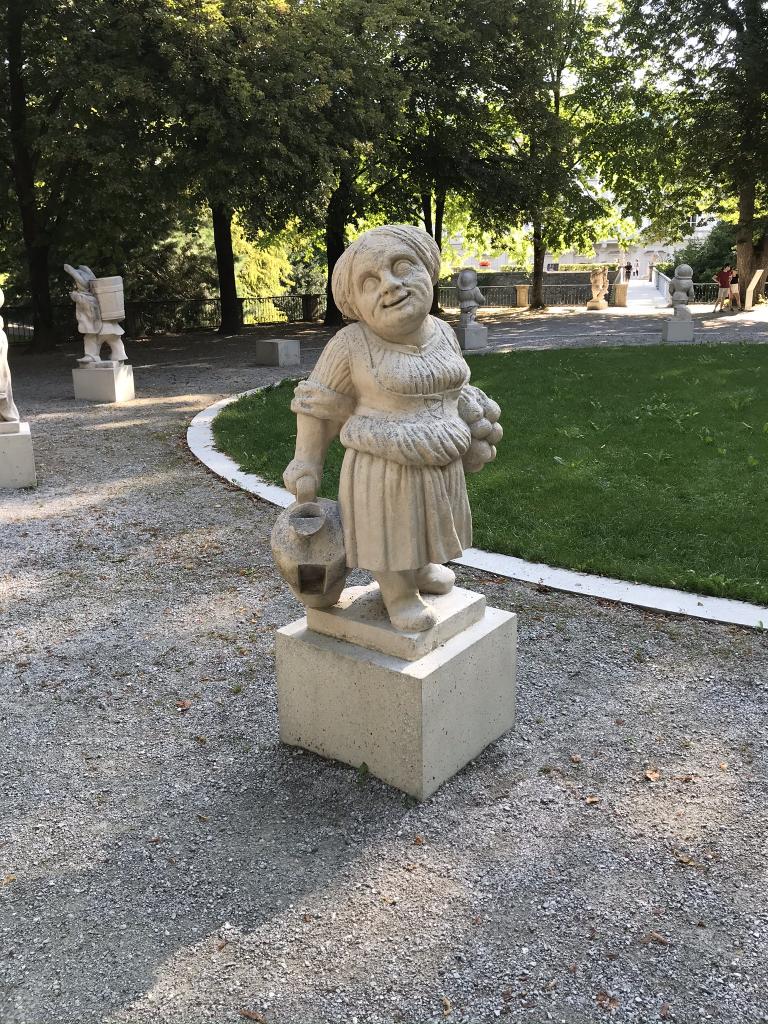
I found out about this place at a rather interesting website called Atlas Obscura. That's a great site to check out if you're about to visit a city and are looking for unusual sights to see.
Later in the morning I set off for someplace a little outside the city center, another place I had discovered at Atlas Obscura: Hellbrunn Palace. This baroque-era palace is famous for its "trick fountains" as they are called. That is, countless water jets that blast water this way and that way out of hidden spots. It's kind of hard to put into words so I'll let the pictures describe it better.
Getting to Schloss Hellbrunn required a ride on the public bus. Since I hadn't used the bus at all the day before--the city center was compact enough that it wasn't necessary--I had to spend a few minutes on a couple different buses while scrutinizing system maps to get used to it. It wasn't long, though, until I was on my way toward the palace. Naturally, face masks are mandatory on the buses right now.
To see the palace and its fountains you have to buy a ticket for a tour; these tours start every hour. There are tour guides which accompany the tour groups and operate the fountains, but you will also get issued a device with which you can listen to recordings of a narrator explaining the history and purpose of various things and places you walk by. There are signs all over the palace with numbers on them, you type the number into the device to hear the narration that goes along with it. These devices are available in various languages.
The Hellbrunn Palace was built from 1613 to 1619 on the orders of Prince-Archbishop Markus Sittich von Hohenems, who had succeeded the aforementioned Wolf Dietrich Raitenau (builder of Mirabell) in that position after Raitenau was arrested and imprisoned by the Bavarians with whom he had been at war. Sittich was a bit of a practical joker and had all these fountains installed all over the palace where guests were unlikely to notice them until they were being soaked by them.
As the narrator explained, these kind of fountains were rather common in palaces like this back in the 1600s, but most of them were removed because people in later centuries considered them cheesy and dated. The owners of Hellbrunn kept theirs installed and working, which is why they're some of the very few trick fountains left today.
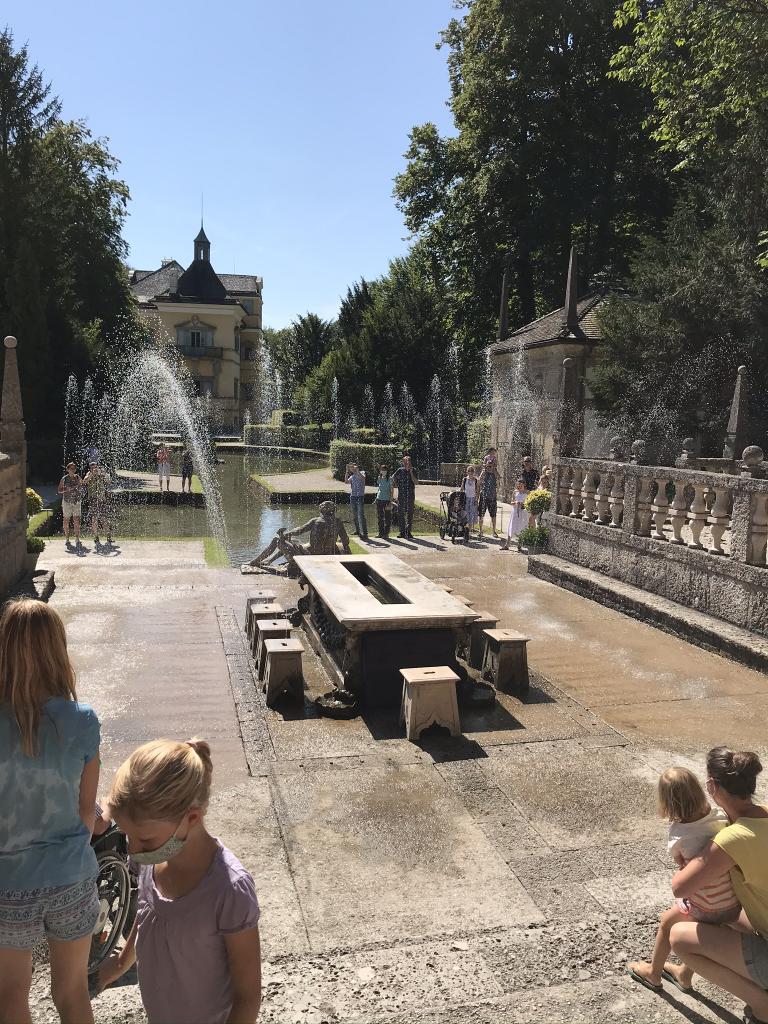
This little amphitheater is the first stop on the tour. Archbishop Sittich liked to host dinner parties at this table. After the guests had drunk copious amounts of wine, he would blast them with the water jets, some of which, as you may notice, shoot right through holes in the seats.
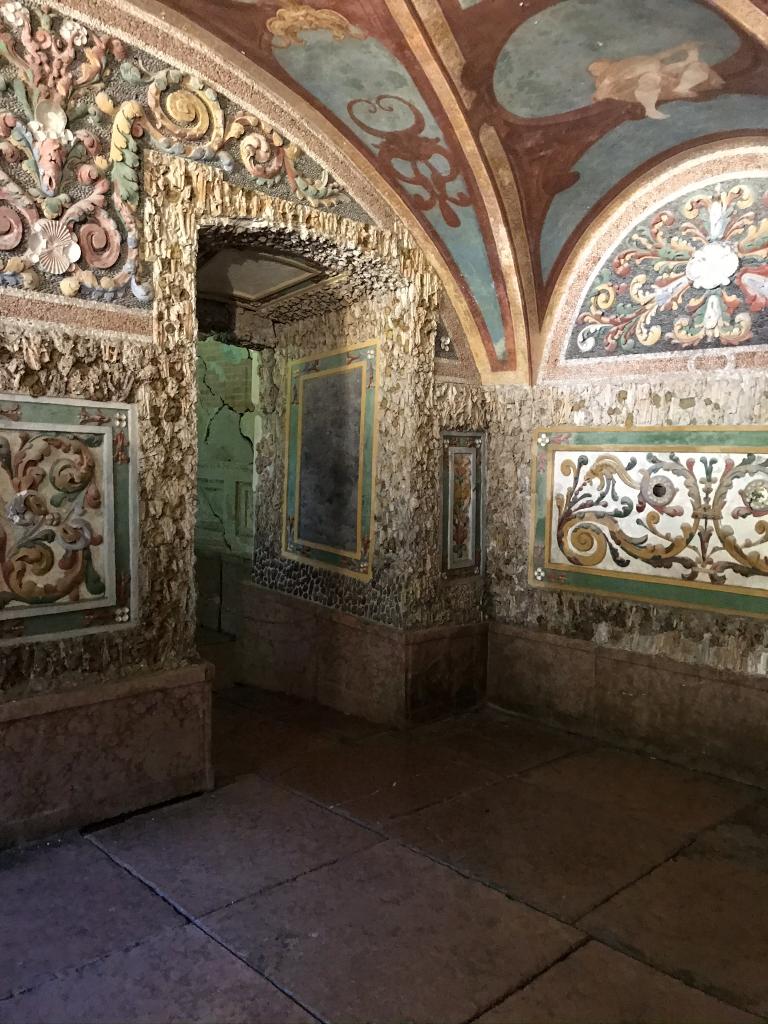
Watch your step in here. There are water jets in some of the cracks between these floor tiles.
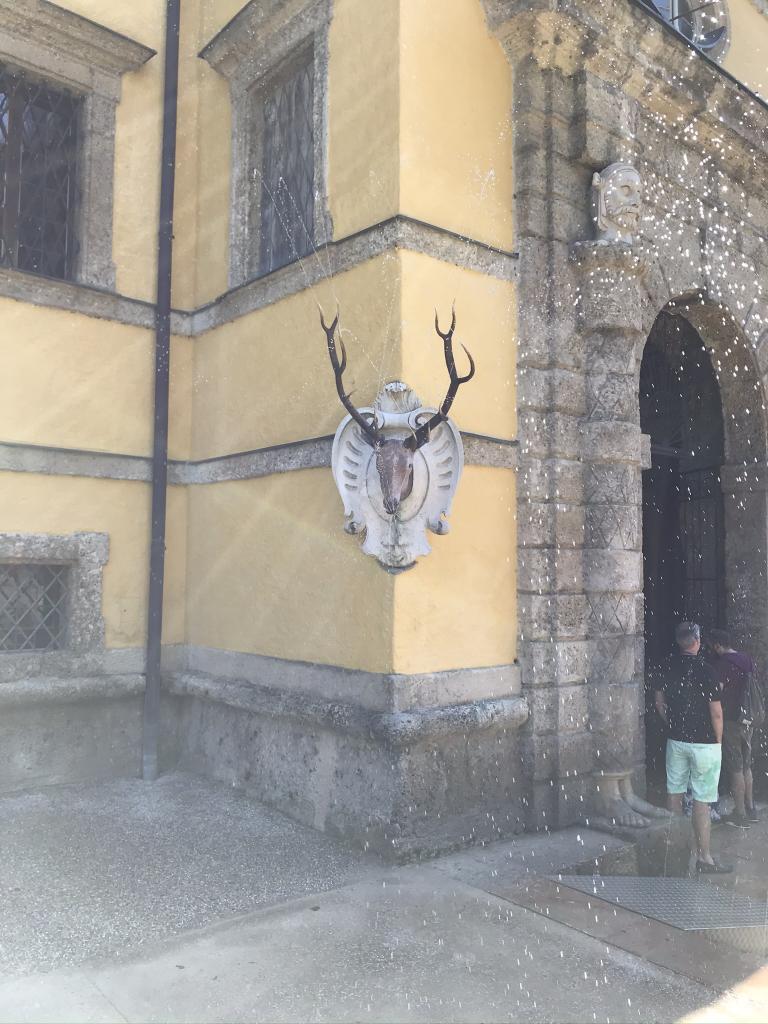
Careful when you walk by this deer head, one of the tour guides might feel like flipping the switch if you're in the blast zone!
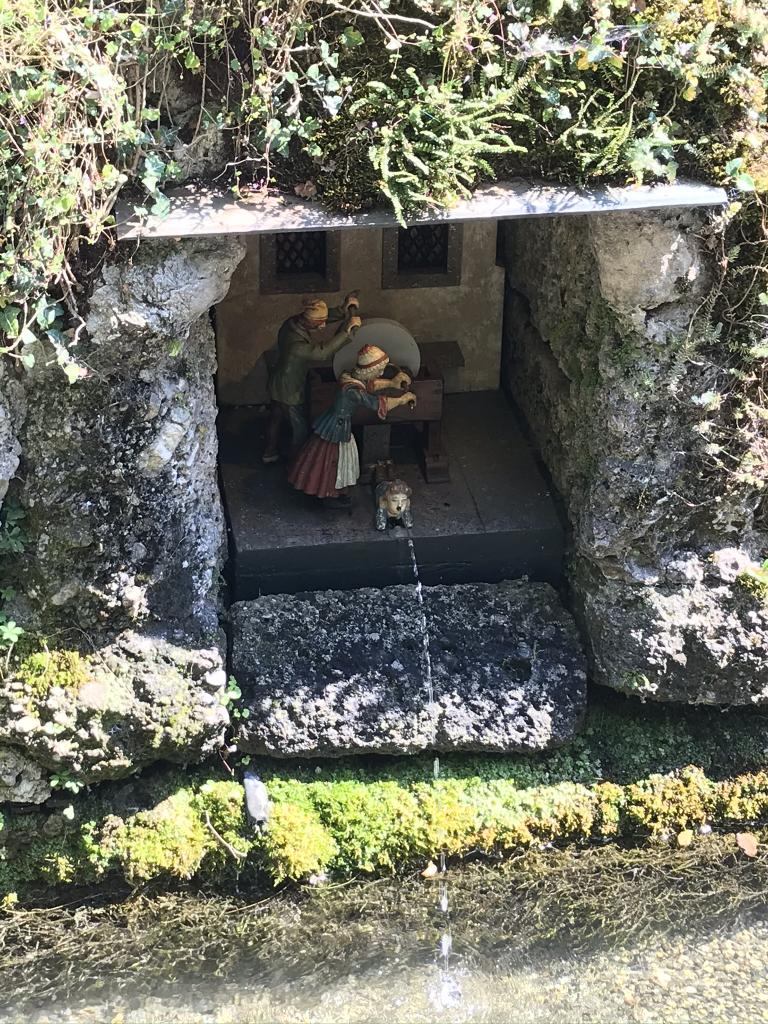
One canal is lined with these little displays, in which you find figures moving around like these ones turning a wheel. They're all animated by water flowing behind the scenes.
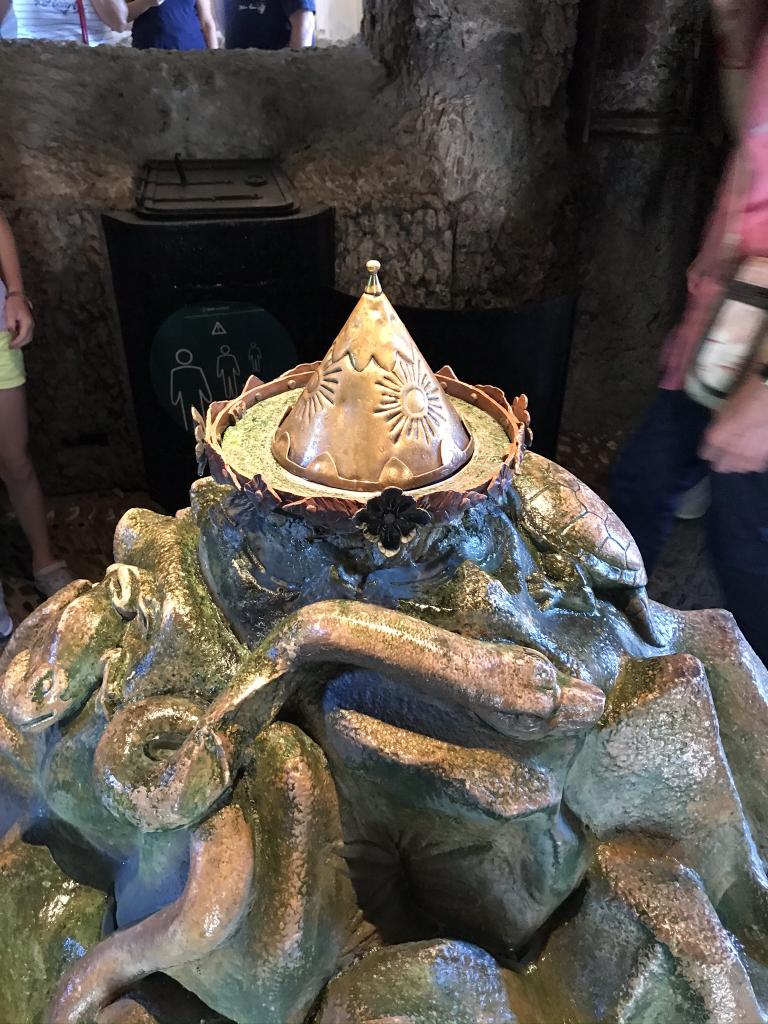
Take a look at this crown...
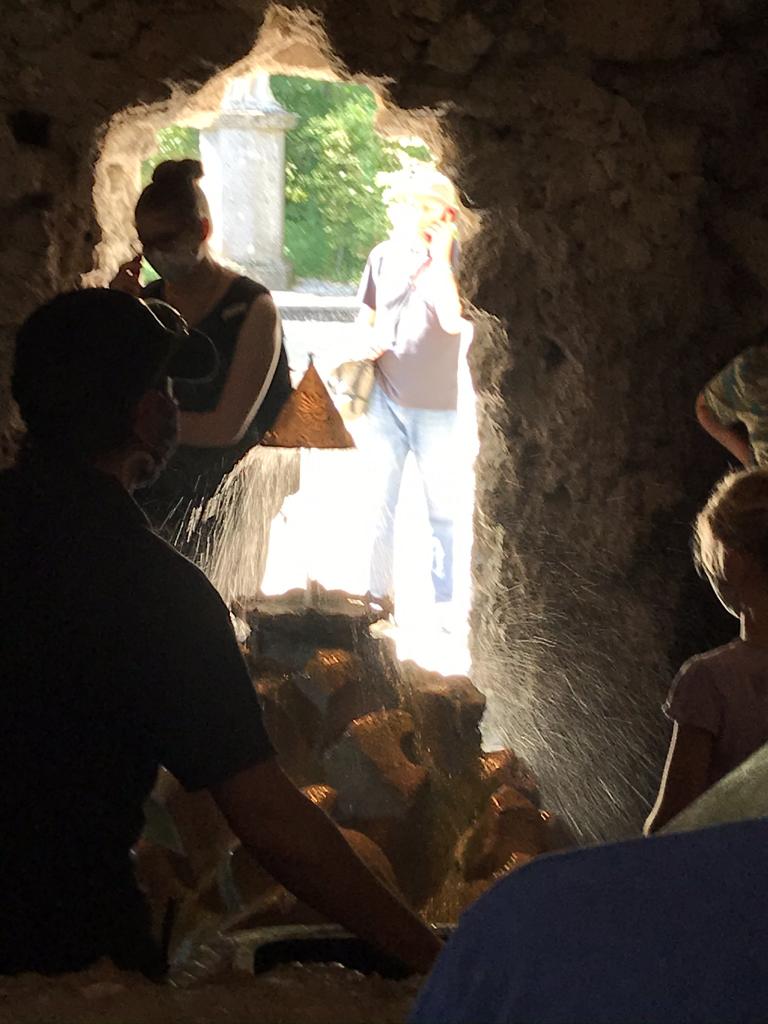
...because the water lifts it up...
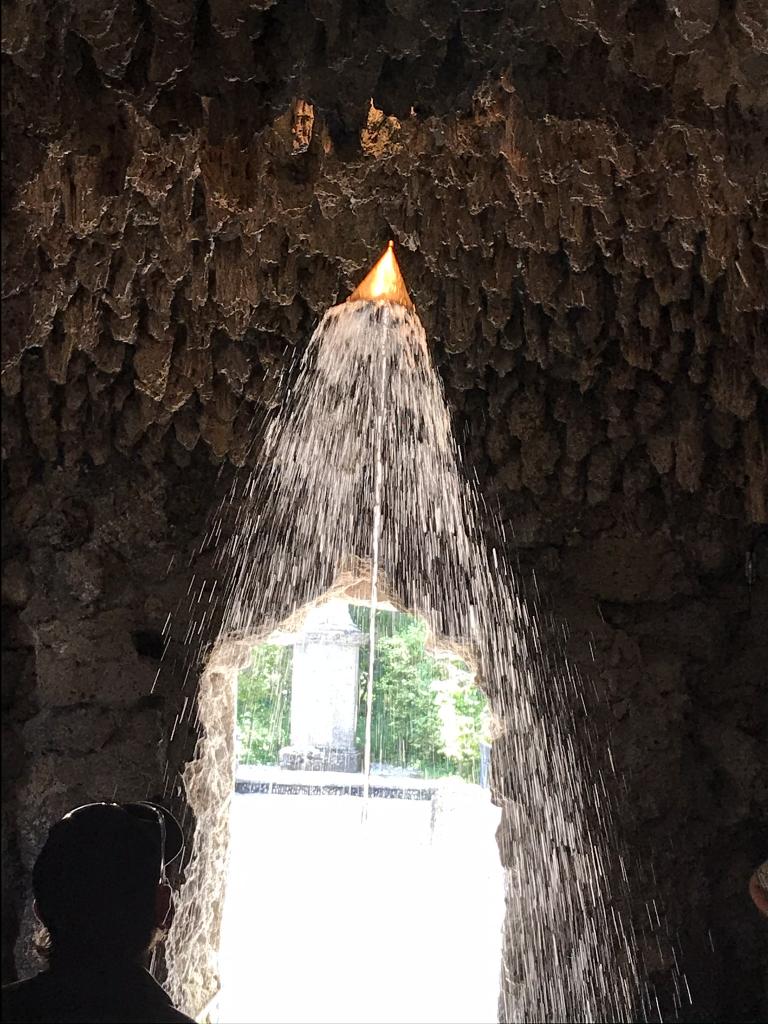
...all the way to the ceiling.
After the palace tour I had lunch at their restaurant: a Parkcafé salad, made with mozzarella cubes and roasted seeds with a vinegar dressing, along with a 33cl glass of Stiegl Hell.
Back in the city center, it was getting later and thus closer to my departure time. The weather outside was quite hot, I needed a cool drink, and there was one brewery and Biergarten I had yet to visit. Instead of walking the lengthy path I did last night, I took an S-Bahn out of the central station.
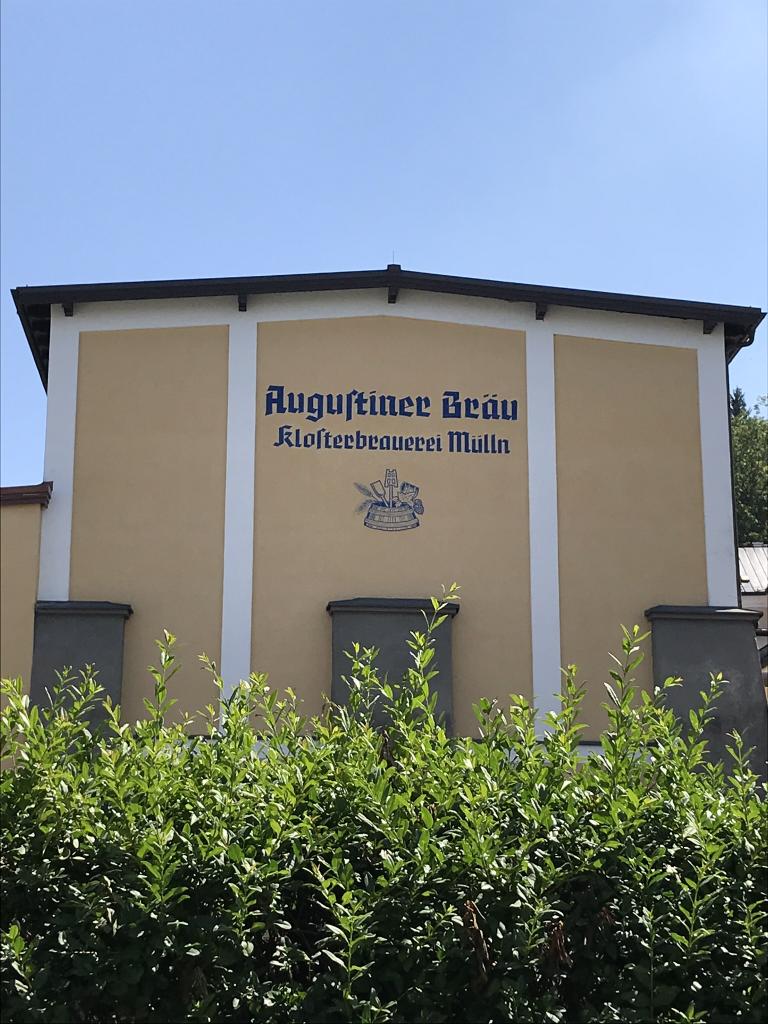
I think it was around here when I looked at this logo, did not see anything resembling a key or the letters JW, and finally realized this place was unrelated to the more famous Augustiner in Munich.
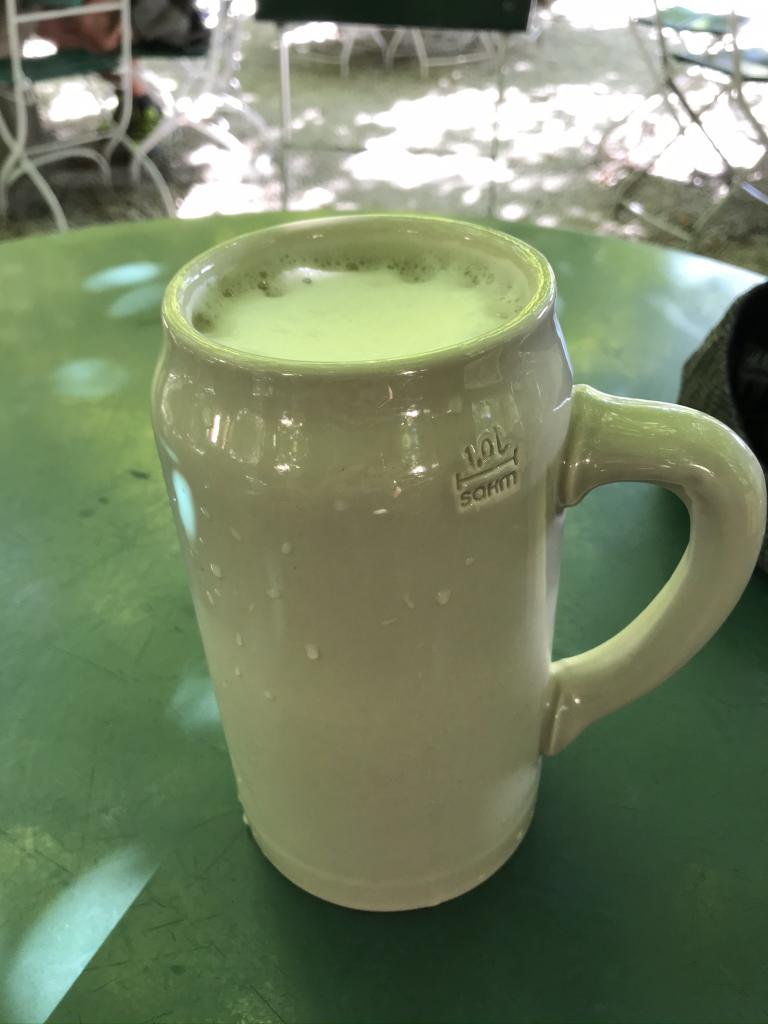
Augustiner had only one kind of beer on tap, Märzen, the fall seasonal variety which is the same kind Munich breweries serve at Oktoberfest. The procedure for getting one here was a little different than what I was used to. You stand in line until you get to the cash register. Pay for your beer, either a liter Maß or a half-liter (I got the full liter) and the cashier gives you a receipt. Then you take your chosen mug off the shelf in front of you. Eventually at the end of the line you hand your mug and your receipt to a server operating the beer taps, who will fill up your mug and hand it back.
So if you're in Salzburg and you want a nice frothy Maßkrug in a classic Biergarten setting, you can't do much better than Augustiner.
After that last beer stop there wasn't any more time to see anything else, so I headed back to the central train station for the last time, though not before reclaiming my things from the locker at the hostel. The train station had a SPAR grocery store in it so I could buy a few things there and not be completely out of food the next morning.
I'd end the story here, but there's some things I have to add about the train rides. The first ride was from Salzburg to Munich on a RailJet, a high-speed rail system jointly operated by the Austrian and Czech national railways.
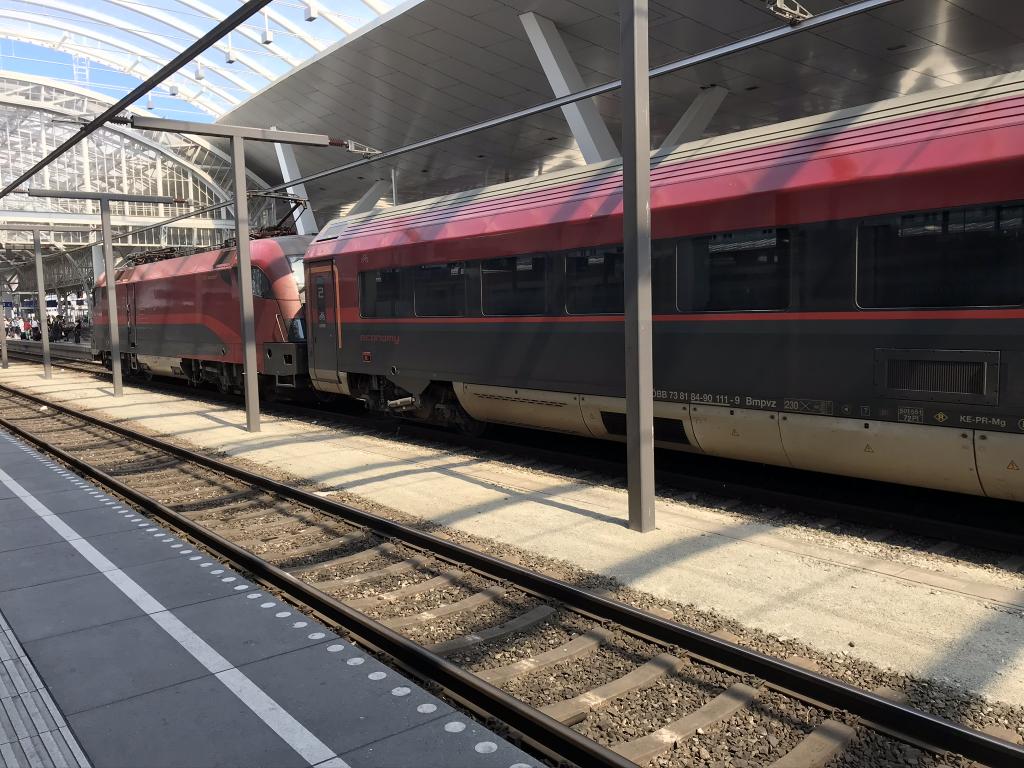
This isn't the RailJet I rode but an identical train that rolled through earlier. That engine looks more or less the same as what one sees on non-high-speed IC trains. On the outside, at least; there must be something more powerful under the hood.
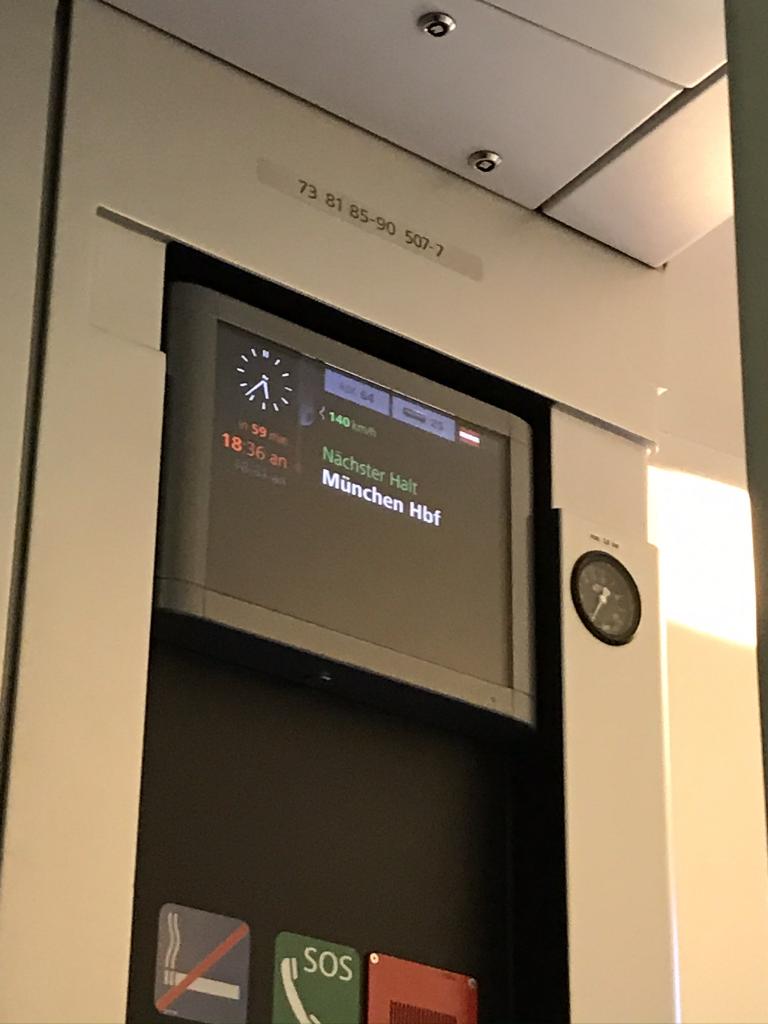
At this moment this train was moving at 140 km/h which is about 84 mph. There were a few moments when it went even faster, like 150 km/h (90 mph). But, there were even more moments when it went slower than this. It should also be noted that it did not make any stops at all between Salzburg and Munich.
Unfortunately I can't comment on how comfortable the seats were because every seat was reserved and occupied! I spent almost all the two hours sitting on the floor at one end of the dining car. I did, however, move to one of the seats in the dining car during the last half-hour so I could have dinner there. What I had for dinner was a bowl of Gulasch soup and a Kaiser roll. Now that was delicious! Even if the soup was hot enough that it slightly burned the roof of my mouth.
I'd also like to end the story here, but the second and last train ride, on a high-speed German ICE, had some issues. Apparently there was a lot of construction in progress on the railroads between Munich and Augsburg, which caused a lot of irksome delays all over that portion of the trip. After all the slow moving and periods of time spent just sitting still on the tracks, when we pulled out of Augsburg and for the whole time afterward the train was a whole hour behind schedule. Oh well, at least I got to sit in a real seat.
So that was Salzburg. Despite it being a much smaller city, I think I squeezed more out of this trip than I did Hamburg. And speaking of squeezing something out of something, that Stiegl beer mustard was delicious. It tasted a little bit sweet with a noticeable beery tinge. I had it on a couple sandwiches the following week, and then brought it to an office barbecue on Friday. It turned out to be such a hit that when I went home after work that day, there was hardly any left!

